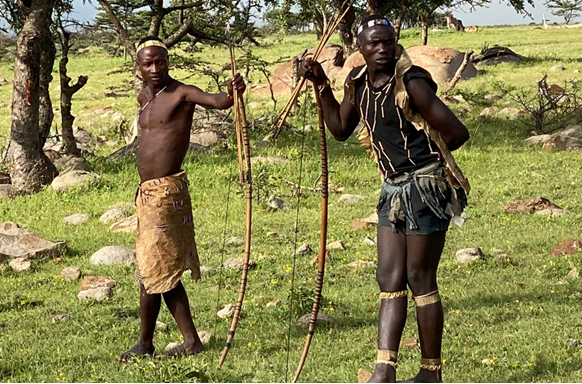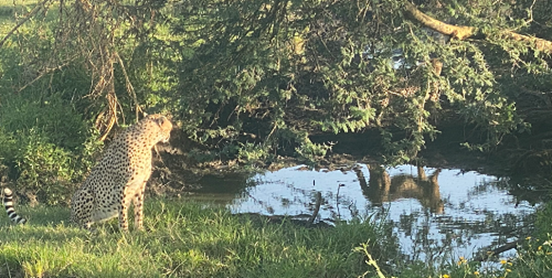HADZA – THE LAST OF THE FIRST
 Humanity – Homo sapiens – began evolving from our Homo ergaster hominid ancestors in East Africa around a quarter-million years ago. In all that time since, only one group of us is directly descended from those first of us, still living in East Africa, practicing the original nomadic hunter-gather lifestyle of countless millennia, their DNA unrelated to any other people on earth, their language unrelated to any other.
Humanity – Homo sapiens – began evolving from our Homo ergaster hominid ancestors in East Africa around a quarter-million years ago. In all that time since, only one group of us is directly descended from those first of us, still living in East Africa, practicing the original nomadic hunter-gather lifestyle of countless millennia, their DNA unrelated to any other people on earth, their language unrelated to any other.
They are the Hadza. It is with good reason anthropologists call them “the last of the first” – for there are less than a thousand of them left as cattle-herding and farming tribes continually encroach on the hunting grounds they need to survive.
The Hadza men hunt with bow and arrows, the Hadza women gather roots, tubers, fruits and berries. They have no villages. Living together in bands of 20-30, they encamp in small shelters of boughs and leaves wherever the men have killed an animal like an eland (their favorite), warthog or some baboons, make a fire (the ancient hand-twisted stick method) and feast on it until it’s time to move and hunt again.
They wear animal skins, supplemented with clothes they trade for with nearby tribes like the Datoga. They love to sing and dance around the campfire. They smile easily and laugh freely. The only metal I saw them have was Datoga-made arrowheads and knives traded for, and a couple of pots for cooking. It’s hard to imagine a more utterly basic and simple existence. Yet they live a far happier, purposeful, and satisfied life than a great, great many of our species elsewhere.
The Hadza live around Lake Eyasi on the floor of the Great Rift Valley at the base of the Serengeti Plateau in Tanzania. It’s in the deep South Serengeti where our Wheeler-Windsor Safaris are during the late Birthing Season of February-March before the Great Migration begins. You witness the most extraordinary wildlife spectacle on earth. Can you imagine seeing 200-300,000 wildebeest stretching across the Serengeti as far as the eye can see?
No picture does that justice, so you focus on the individual, like this mommy cheetah watching her cub’s reflection in a small pool.
Here is where humankind began amidst this primordial scene. And the Hadza have been here since that very beginning. It is such a privilege and honor to be with and learn from them. It is having life-memorable experiences like this that we aspire to give those who go on safari us. Let me know if you’d like to meet “the last of the first” on our Wheeler-Windsor Serengeti Birthing Safari in 2025. (Glimpses of Our Breathtaking World #288, photo ©Jack Wheeler)


